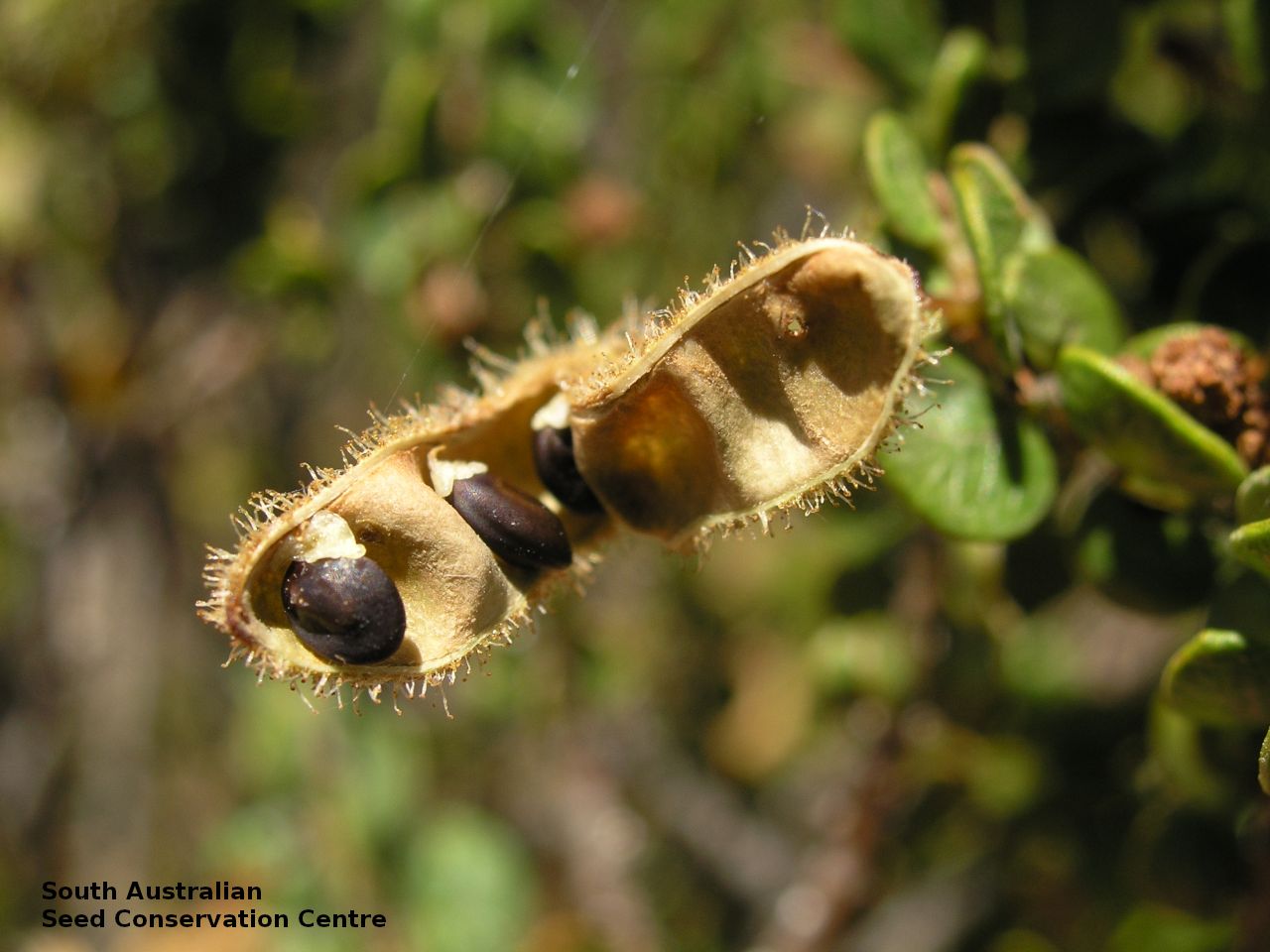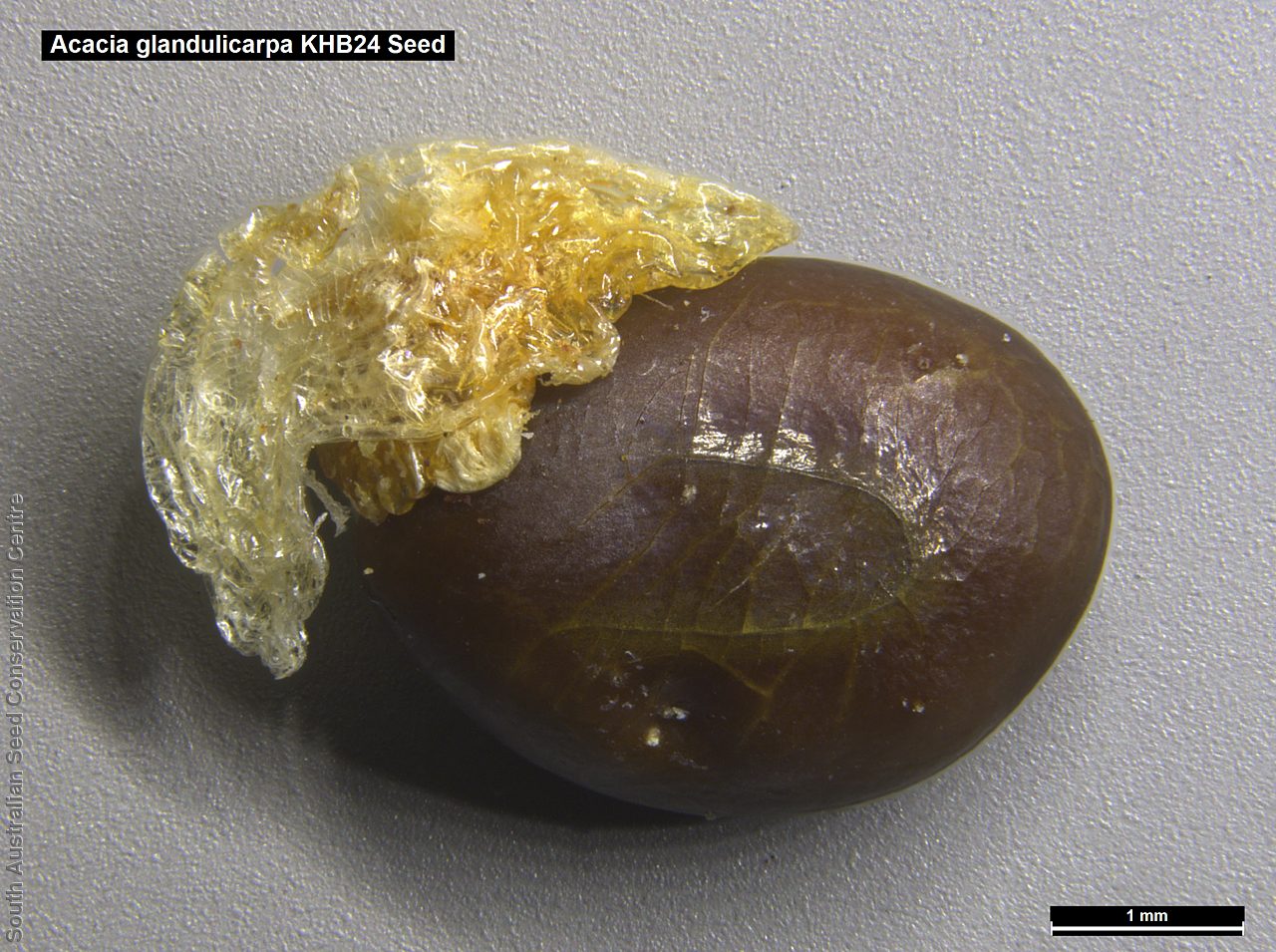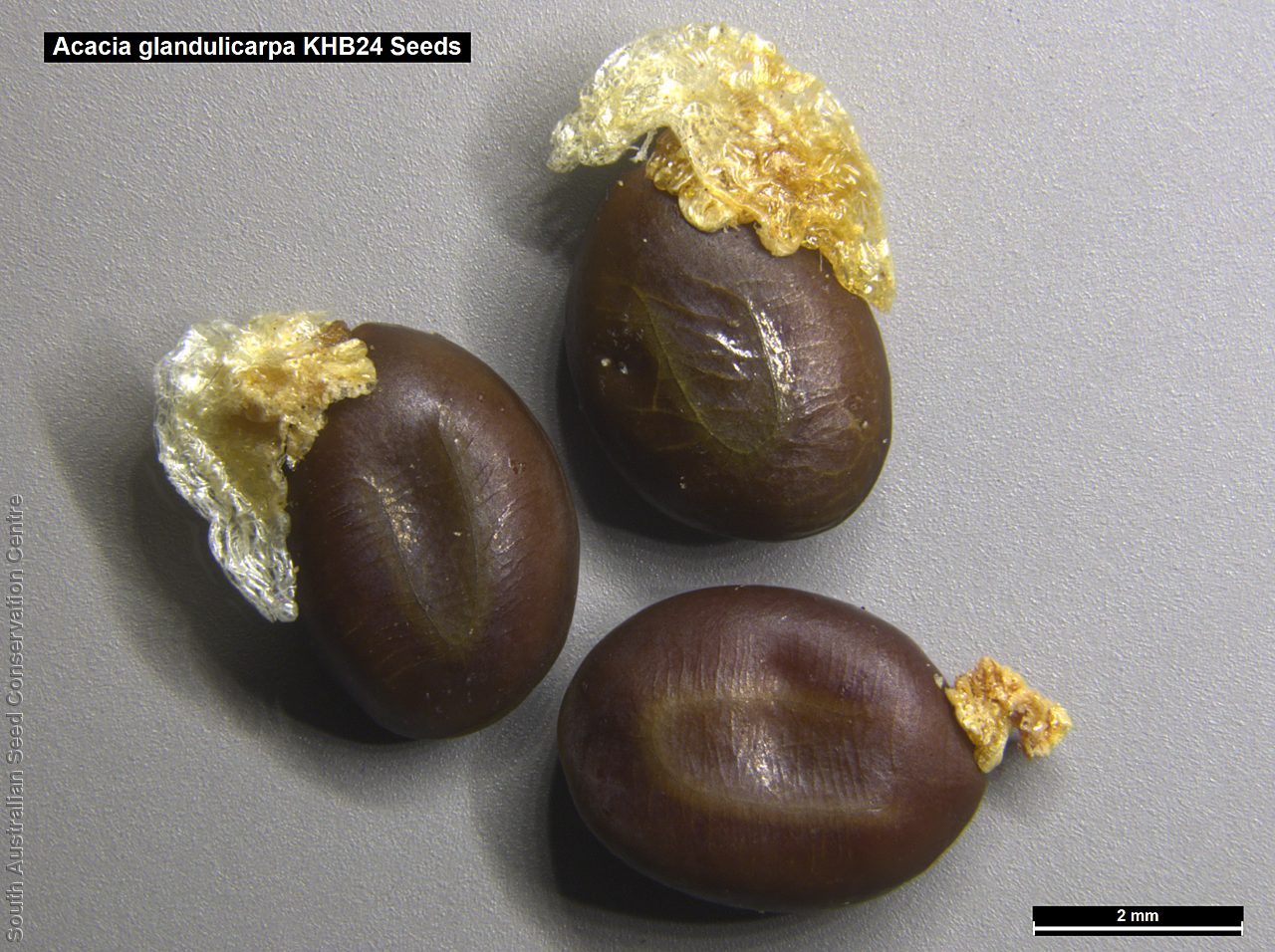









Botanical art
Etymology
Acacia from the Greek 'akakia' and derived from 'ake' or 'akis' meaning a sharp point or thorn and 'akazo' meaning to sharpen. Dioscorides, the Greek physician and botanist used the word in the 1st century AD for the Egyptian thorn tree, Acacia arabica. Glandulicarpa from the Latin 'glandula' meaning a small gland and Greek 'karpos' meaning fruit, referring to the legume covered with glandular hairs.
Distribution and status
Found in two small populations in South Australia, the main population in the northern Mount Lofty Ranges, in the Burra Gorge area on rocky hillside in open scrub vegetation and also in the South-east close to Victoria. Also found in Victoria. Native. Very rare in South Australia. Very rare in Victoria.
Herbarium regions: Northern Lofty, Murray, South Eastern
NRM regions: Adelaide and Mount Lofty Ranges, South Australian Murray-Darling Basin, South East
AVH map: SA distribution map (external link)
Plant description
Somewhat viscid, rather dense, rounded, spreading, much branched shrubs to 2 m high with a dull olive-green foliage. Branches grey-brown, terete, pubescent, marked with small raised leaf bases along the stems. Leaves obliquely oblong-obovate to more or less elliptical to 12 mm long and 6 mm wide, erect, thick, rigid, glabrous, minutely glandular, sometimes viscid when young; lower edges usually undulate, 2-veined with the central vein more prominent. Inflorescences simple and axillary, solitary or twin with globular, bright yellow flower-heads. Flowering between July and October. Fruits are narrowly oblong, straight or curved pods to 3 cm long and 3 mm wide, viscid and covered with glandular shining hairs. Seeds are hard, dark brown, obovoid to ellipsoid seeds to 5 mm long and 3 mm wide. Seed embryo type is investing.
Seed collection and propagation
Collect seeds between November and December. Collect mature pods that are turning brown, with hard, dark seeds inside. Place the pods in a tray and leave to dry for 1-2 weeks or until the pods begin to split. Then rub the dried pods to dislodge the seeds. Use a sieve to separate any unwanted material. Store the seeds with a desiccant such as dried silica beads or dry rice, in an air tight container in a cool and dry place. From four collections, the seed viability was very low to high, ranging from 5% to 90%. This species has physical dormancy that needs to be overcome for the seed to germinate (e.g. nicking or softening the seed coat).
| Location | No. of seeds (weight grams) | Number of plants | Date collected | Collection number Collection location | Date stored | % Viability | Storage temperature |
|---|---|---|---|---|---|---|---|
| BGA | 653 (6.53 g) | 3 | 2-Dec-2004 | DJD63 South Eastern | 31-Mar-2006 | -18°C | |
| BGA MSB | 24,500 (318.5 g) 24,500 (318.5 g) | 100+ | 6-Dec-2004 | PJA93 Northern Lofty | 31-Mar-2006 | 90% | -18°C |
| BGA | 1,300 (7.55 g) | 30+ | 24-Dec-2005 | KHB24 Northern Lofty | 1-Aug-2006 | 5% | -18°C |
| BGA | 1,350 (11.52 g) | 30+ | 28-Nov-2007 | KHB92 Northern Lofty | 19-Sep-2008 | 80% | -18°C |
| BGA | 4,300 (64.47 g) | 50+ | 27-Dec-2007 | KHB110 Northern Lofty | 19-Sep-2008 | 90% | -18°C |
Number of plants: This is the number of plants from which the seeds were collected.
Collection location: The Herbarium of South Australia's region name.
% Viability: Percentage of filled healthy seeds determined by a cut test or x-ray.